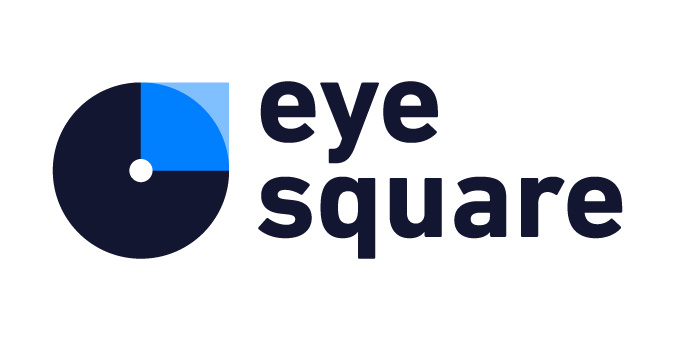26 May New Game – What the gaming industry tells us about the next phase of the digital (cultural) revolution
Which role does the the gaming industry play in 2021? And why should market researchers, advertisers and brands be interested in gaining knowledge about it? Dr. Jan-Michael Kühn, an expert at neurosymiotics and coordinater of the gaming tribe at eye square, explains the importance of the gaming industry as an underestimated key player in the marketing world as well as its role as an unseen force underneath cultural movements. Enjoy the full interview below and gain interesting insights on the gaming market!

eye square: What is the gaming industry from your perspective Jan-Michael?
Dr. Jan-Michael Kühn: Gaming is one of the industries that has seen a rapid growth as a result of the COVID-19 lockdowns. Despite being an elephant in the advertising room, many marketing professionals are not very familiar with this particular industry.
The big players, like Activision Blizzard or Nintendo, have market caps on the same scale as Deutsche Post, Moderna, BASF or Colgate, and have grown by more than 20% since the mid-2020s. Important industry giants, such as the leading Chinese game developer by revenue, Tencent (revenue $6.7 billion), are usually not even listed on the market. This indicates that there is underreporting in different areas: who are the big players, what defines gaming in the first place, what does it all mean for the advertising, media and market research industries? We want to help shed some light on these important questions.
eye square has been exploring gaming intensively since 2020 and has founded an experimental tribe for this purpose. The mission of the gaming tribe is to put together its own tools to define the nuances of the “gaming” ecosystem to use and further expand the deep insights into digital experiences made available at eye square. After all, the gaming industry is worth more than $160 billion, which is approximately twice the size of German e-commerce or roughly one-third of US e-commerce. Furthermore, since young consumers are gamers and trend setters, important conclusions can be drawn about the target market under 35. After a few years, these trends are often mirrored in pop culture, particularly because gaming often picks up and evolves the latest trends in terms of technology and media design (“feel and touch”), vocabulary, and themes. Gamers also spend a lot of focused and exclusive time playing games (on average more than 8 hours per week – in China even 12.5 hours) – which makes this time important for advertisers. Last but not least, gaming trends are also interesting for entrepreneurs and educational institutions, because gaming can be used to derive methods for motivation and incentivization, as well as for the playful teaching of learning content.
Can you tell us more about your background and your role in the eye square Gaming Tribe?
I am a gaming veteran of the 1990s who was hired early on by Babel Media to test and adapt video games while studying sociology. It was a dream job that even sent testers to California on a regular basis back then to play Playstations “until they burned.” My findings were also useful in my studies, which focused on the sociology of music scene economies. I also became an expert in neurosemiotics, which makes me an ideal member and coordinator of the gaming tribe at eye square. I performed research on the “Cultural Logic and Seductive Power of Electronic Dance Music.” The question of what is a “spark” and what is a “voluntary participation in seduction” (also defined as “allowing an external impact on the inner world”) can be seen as examples at large concerts or techno clubs, with the modelling of its effect, are all topics of interest for any type of communication.
Why is eye square interested in gaming?
Gaming is part of and structured in a similar way to culture: there are large and small, public and less public developers, as well as independents and corporations. Gaming is a typical ecosystem in which tradition alternates with innovation and disruption. In this context, gaming is important for a company whose success depends largely on understanding the culture and the population. eye square has a lot to offer as a pioneer in the research of cultural and digital trends. With psychologists, sociologists, cultural scientists, developers, media and IT experts, we have both the technological and scientific know-how. And since we are also gamers, we also have the human expertise.
There are two other factors that make gaming appealing to us as a research object: since gaming is a global and relatively homogeneous practice (many games are recognised globally), we can detect and evaluate patterns in different countries. Since all actions take place on digital devices, it is simple to research gamers’ digital actions and experiences.
What are questions that the tribe is interested in?
We ask a whole series of questions.
1) ‘How can we offer better games and hardware?’ is the starting point that directly interest our customers – whether they are game developers, hardware or system producers such as Sony, Nintendo or others, but also smartphone and PC manufacturers. This is usually followed by ‘how can we offer accessories – additional equipment – to individuals or groups who play games’.
Of course, it’s also about revenue and sales opportunities – real and virtual. Games increasingly cost nothing. The “free-to-play” model is financed by in-game and clever advertising.
Advertising can be displayed between game levels or before the game; however, it can also be placed “in the game” – whether through virtual “perimeter advertising” in racing games or advertising through visuals at “virtual reality events” (such as virtual large-scale concerts, where stages or even performers or other spectators can be advertisers). This is attractive not only to developers, but also to companies that want to sell to gamers and would want to take advantage of advertising the gaming environment.
2) What is gaming and what does it represent or do for society and its structures and processes? One can discover trends years in advance, both in terms of technology and topics, as well as possible effects on the mainstream culture. By also fundamentally dealing with experience in the broadest sense – sensory, emotional and cognitive – we learn a lot about possibilities for an alternative application of gaming concepts in other “worlds of experience”. Gaming is an entry/gateway opener (or even seducer) in the field of VR/AR. One can test new applications here, or test and develop uses for purposes of education (virtual study tours from home) or medical therapies (therapies / self-courses for people with disabilities).
3) Most important are the practical and technical questions: How do we explore all this? What are the questions we need to ask and explore? How can we capture this methodically, and how can we get at the answers technologically? Do we best use facial expression tracking, skin measurement, eye tracking, surveys, interviews – or all together? Furthermore, the process of assessment is important. You must focus because you can accumulate a massive amount of data, but have to be able to interpret and analyse it- the typical data volume problem: from data to information to knowledge. We are leaders in Germany, if not in Europe with our ability to collect and process data so you can understand and use it properly.
Which customers should be aware of the knowledge?
Investors, publishers and tech companies are in the field of electronic entertainment, along with anyone who wants to understand the next step in (consumer) society. Even fields like medicine and education can adapt principles from the gaming world, which is gamification. Gamification is the transfer of principles of games (motivational principles e.g. awards, competition, hierarchies) to areas such as customer or employee motivation (e.g. how to motivate customers to rate). For example, Uber’s or AirBnB’s quality management is based on such game principles with differently coloured icons for customers and providers.
Want to learn more on this topics? Download our Video Game UX Whitepaper here or contact us directly.
